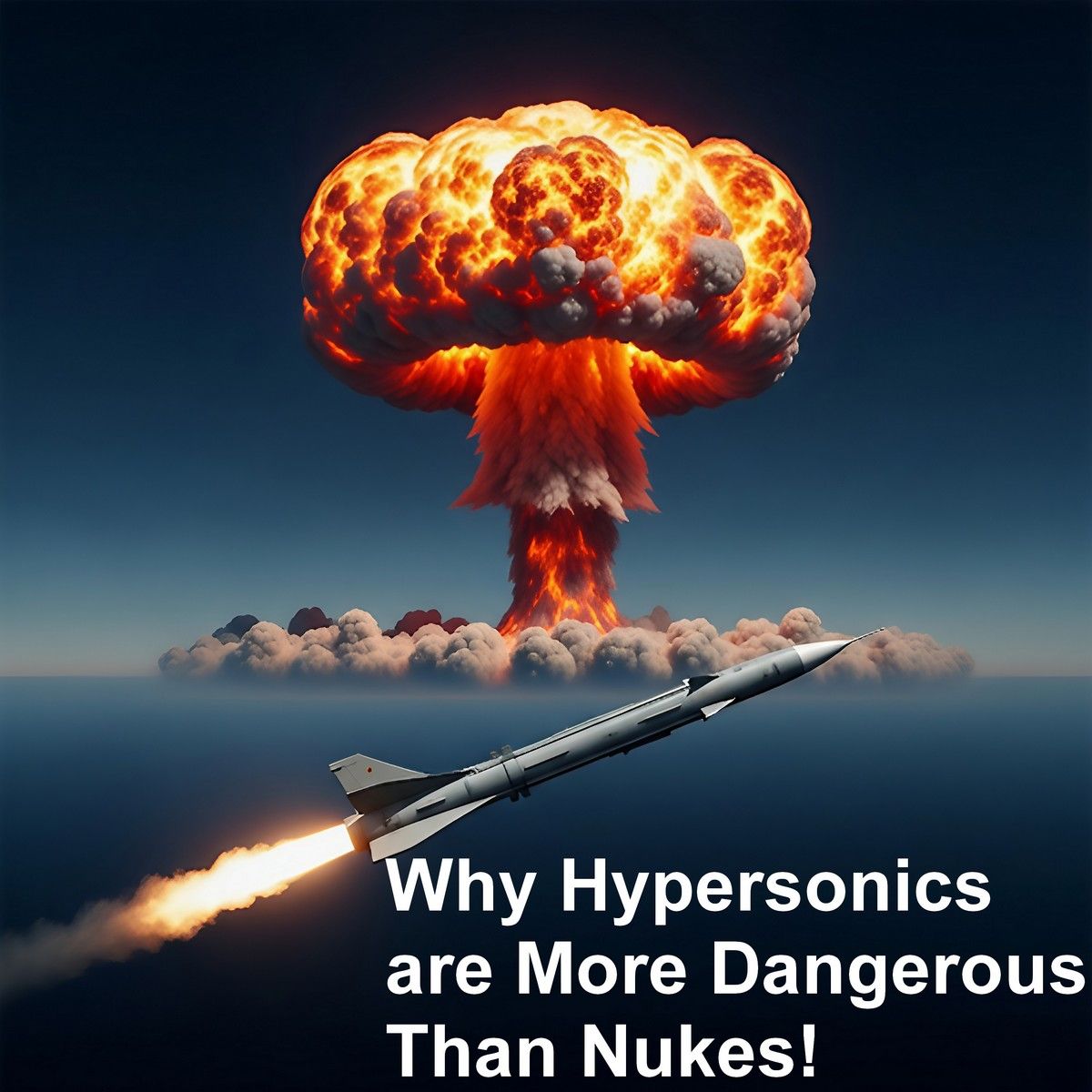Ep8 - Why Hypersonics are More Dangerous Than Nukes

Since the Cold War, we've always been told the same story: when it comes to geopolitics, a climate of nuclear deterrence exists between states that possess nuclear weapons. What does deterrence mean? It means discouraging any threat or attack with the fear of possible retaliation involving nuclear weapons. The consequence of such retaliation could lead to a counter-retaliation, triggering the infamous escalation, where each state with nuclear weapons would be authorized to use them.
In such a scenario, we must also consider the various alliances between states. If one state were attacked, an allied country—also equipped with nuclear warheads—could step in to defend it. In a short time, this escalation would lead to a global nuclear conflict, which would put human civilization at risk. This, then, is the classic narrative.
However, the Russia-Ukraine conflict and, even more so, the Israel-Iran conflict, should teach us a different lesson. The new narrative we should all start considering is this: precisely because all potential actors in the field know full well what the disastrous consequences of using nuclear weapons could be, they are highly unlikely to ever be used. No country—no matter how crazy—wants the total annihilation of the human race. A belligerent country usually wants to dominate another country; it doesn't want to start a war that everyone could lose.
In fact, other types of weapons are far more effective, and the Israel-Iran conflict proves it. Ballistic missiles and hypersonic missiles are some examples. Let's take a look at what they are.
Ballistic and Hypersonic Missiles: A New Reality
Ballistic missiles are designed to follow a roughly parabolic, or "ballistic," trajectory that allows them to hit targets thousands of kilometers away. The missile is launched to very high altitudes, travels through the atmosphere, and enters space. Once in space, the missile travels for thousands of kilometers without needing propulsion until it falls back to Earth. At that point, thanks to gravity, the missile has gained tremendous speed and becomes very difficult to intercept. Its high velocity also increases its destructive power.
Now let's look at hypersonic missiles. To be defined as "hypersonic," a missile must reach a speed at least five times that of sound (more than "Mach 5"). This means it travels at least 1.6 kilometers per second, a velocity at which air begins to behave differently. This is the distinction that leads us to speak of "hypersonic velocity" (and not simply "supersonic," like speeds between Mach 1 and Mach 5). Many of the missiles developed recently are actually much faster than this, often reaching speeds of up to Mach 20.
Let's do a practical example. A missile traveling at Mach 20 moves at twenty times the speed of sound, or about 24,696 kilometers per hour (km/h). This means that in just 10 minutes, a missile of this type can travel 4,000 km. In other words, in less than 3 minutes, a missile of this kind can cross the entire length of Italy (1,291 km from the northernmost point to Lampedusa, the southernmost island)...
That’s just a glimpse! The full story — and the full context — are in the podcast episode below. Curious to hear more? Listen the full episode on your favorite platform:
Spotify
Apple Podcasts
Amazon Music
Castbox
